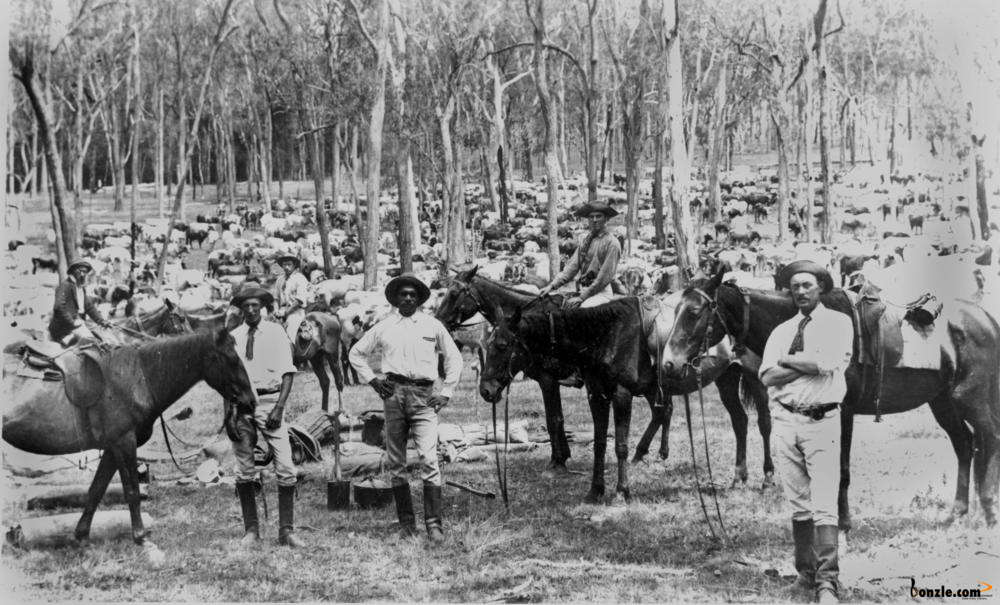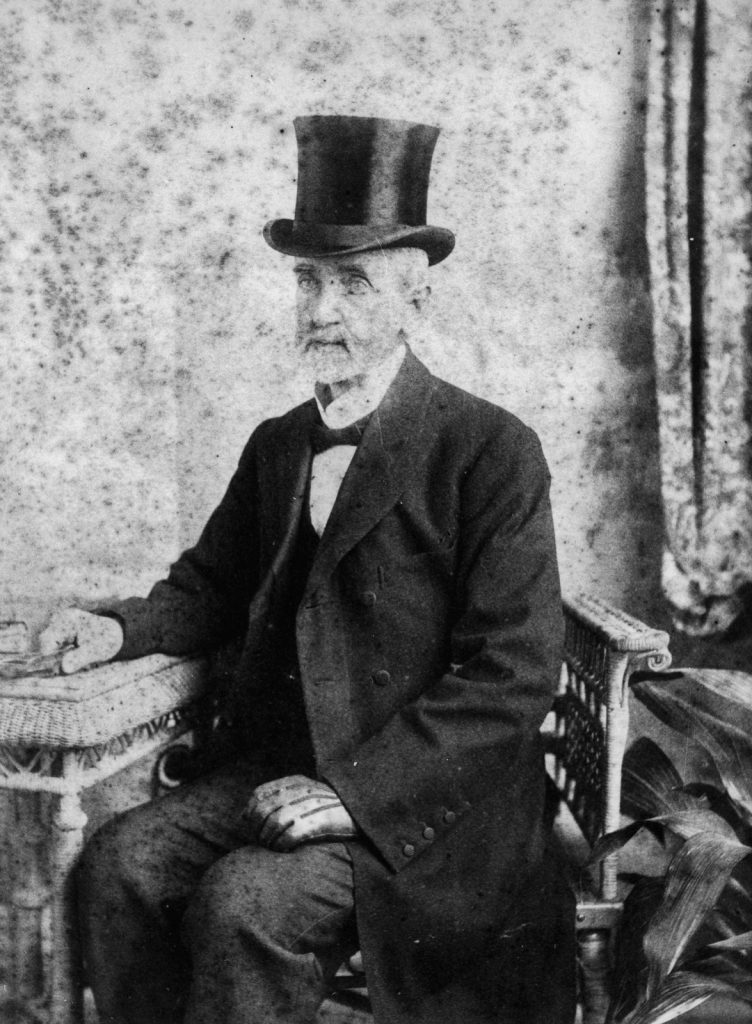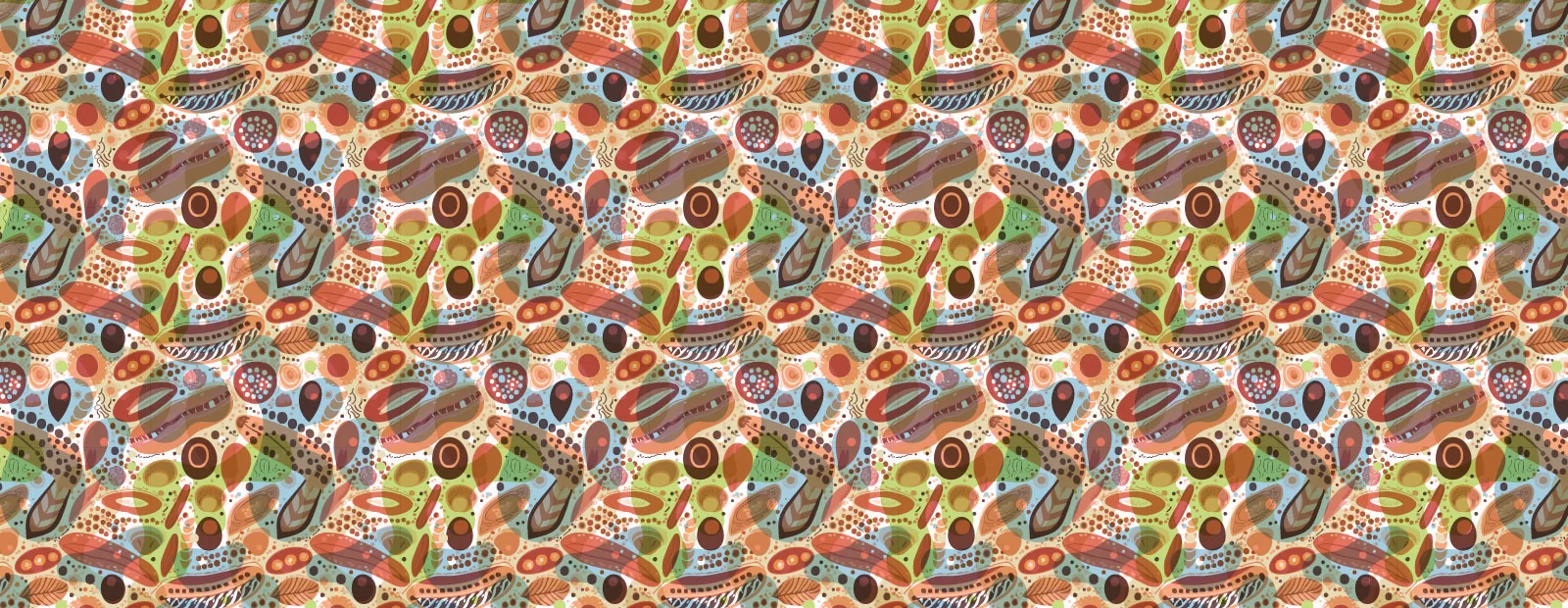Towards Separation (1859)
The most urgent concern for the settlers was the development of ‘roads’ to and from their pastoral properties and ports or markets for their wool clip. Except for the Scotts at Mt. Esk, most of the early settlers brought sheep and their prosperity and continued survival depended on the tenacity of bullock wagons through harsh terrain. Developed entirely in the ‘school of hard knocks’, the bullocky’s experiences were shared and ‘conventional wisdom’ of this kind began to define the most reliable routes through the Brisbane Valley.
Mary McConnel took her first trip to Cressbrook station in 1849. She travelled in a phaeton carriage (like Queen Victoria’s 1842 state carriage that carries Queen Elizabeth II to the Trooping of the Colours) and she reported many bullock wagons travelling on the ‘road’ with her. Before Separation, settlers also had to fund their own bridge work over the many valley waterways and occasionally rewards were offered for new ‘roads’ to market with fewer river crossings. (see Coach Routes). In 1852 the only first grade road listed in Moreton Bay was the bridle track on the Mt. Lofty foothills through what was later to become Toowoomba.
Along with the roads came the very welcome accommodation houses that provided some memory of communal living to alleviate the real tyranny of distance in the new colony. In 1843 two such houses were established: one by George Thorne in Ipswich called first Palais Royale and then Queens Arms, and the second one by Thomas Alford at Drayton for travellers from the Darling Downs over the Great Dividing Range to Moreton Bay. Jacob Goode opened the Burnett Inn on part of Nanango Station in 1848. Two years later a Post Office was established there, served initially from Drayton. By 1856 the Burnett Inn (known as Goode’s Inn) received mail from Gayndah and Ipswich, this mailman certainly breaking his journey at the Wivenhoe Inn like Mary McConnel had done in 1849. Some small settlements developed around the accommodation houses, while others were simply extensions of hospitality from the surrounding pastoral property.
Initially the selections in the Brisbane River Valley were stocked with sheep, providing wool and tallow. But disease was endemic amongst the flocks and by the 1850s most properties were being stocked with cattle. They would travel about 10 miles (16 k) a day so that camps were established at regular intervals along the stockroutes between the pastoral properties.

With sale yards previously at Esk and still at Toogoolawah it is not surprising to find that the distances between some of the towns that developed in this region approximate a day’s travel with stock: Coominya to Lowood (16km); Coominya to Buaraba (17km); Buaraba to Esk (17km); Esk to Toogoolawah (18km). Here the highway followed the stock route that followed the bullock wagon tracks and the distances given are by today’s road network. This relationship is not so clear over the Blackbutt Range where the towns developed from timber camps, but returning to the old pastoral station names, it is still just 18 km by road from Tarong to Nanango
As the New South Wales Government seemed disinclined to budget for the new pastoral developments in Moreton Bay, the move towards separation grew apace. It was not the first time.
On 17 February 1846 Queen Victoria had signed Letters Patent establishing the colony of North Australia, with its boundaries set by an Act of British Parliament. They included all of what would become Queensland with the exception of the Moreton Bay, Darling Downs and Maranoa districts and extended right to the Western Australian border. It was intended to house exiled ex-prisoners and reformed convicts from both British and Australian gaols. The New South Wales government opposed it as a re-introduction of transportation but Sir Charles Fitzroy was appointed Governor anyway. Lieutenant-Colonel George Barney was appointed Lieutenant-Governor and Superintendent of North Australia, to administer the new colony on Fitzroy’s behalf.
In November 1846 Queen Victoria revoked the colony on the advice of the new Colonial Secretary, Earl Grey, but by the time this information reached Australia Port Curtis had been chosen as the new settlement site. The settlement was disbanded in 1847. In 1854 Governor Fitzroy installed Captain Maurice O’Connell (grandson of Governor Blight) as Government Resident at Gladstone, Port Curtis, then recalled him in 1856 and reappointed him again in 1858. The office was abolished finally in 1860 and Captain O’Connell was appointed to the Queensland Legislative Council in the same year.
On 6 June 1859 the state of Queensland was created and Sir George Ferguson Bowen was appointed Governor. Elections were held for representatives to the Legislative Assembly in April/May 1860. The documentation for the new state was out of date so that Queenslanders did not enjoy universal male suffrage as their NSW counterparts had from 1858. Only those males who satisfied the property requirements could vote; plural voting was permitted; decisions were made on a simple majority and voting could be by a show of hands unless one of the candidates or not less than six voters demanded otherwise!
Of the twenty six members elected to the Legislative Assembly, the nomination of a Presbyterian minister was declared invalid, one member was elevated to the Legislative Council within a month of his election and seven resigned before their three year term was completed. Sadly all three original representatives of West Moreton that included the Brisbane River Valley were included in this number.

So how was the Brisbane River Valley as we now know it represented in the first Queensland Parliament? The three members for the electorate of Ipswich were a ‘mixed bag’ and included Arthur Macalister (later Premier), Frederick Augustus Forbes (Speaker) and Patrick O’Sullivan who was transported to New South Wales in 1838 for a bayonet attack and later pardoned.
The Burnett electorate was represented by Charles Robert Haly of Taabinga and Robert Ramsay Mackenzie. Mackenzie was declared bankrupt in 1844, discharged in 1846, became Colonial Treasurer in the first 1860 ministry, and was part leasee of fifty two pastoral runs in 1856 and the acrimonious antagonist of Arthur Macalister.
The electorate of West Moreton took in all of the Brisbane River catchment area as well as Ipswich and Laidley right down to the New South Wales border. It was finally represented by (1) Joshua Bell of Jimbour who replaced Joseph Fleming (Bremer Flour & Saw Mills) who replaced William Lambie Nelson (Ipswich Presbyterian Minister); (2) Henry Challinor (Surgeon on Lang’s immigrant ship the “Fortitude”) who replaced Alfred Broughton and (3) Benjamin Cribb, (merchant) of Cribb & Foote, who replaced the dentist Henry Jordan, after he was sent to London in 1861 as commissioner and immigration agent.
If representation of the Brisbane River Valley had been somewhat sporadic in the Lower House, it was well served in the Upper House to which Frederick Bigge of Mt Brisbane, John Balfour of Colinton, Louis Hope of Kilcoy and John McConnel of Cressbrook and Durundur were appointed. The representation was heavily biased towards the ‘squattocracy’ but nevertheless one of the early acts passed by this first Parliament was the ‘Crown Lands Alienation Act’ that was opposed and subverted by pastoralists until 1876. This Act established agricultural reserves and set a price for land near water or towns of more than 500 people at 20 shillings an acre to be paid in advance. This was designed to open land to small yeoman selectors but led instead to dummy buying and increased speculation by wealthy squatters on unstocked ‘land banks’.

